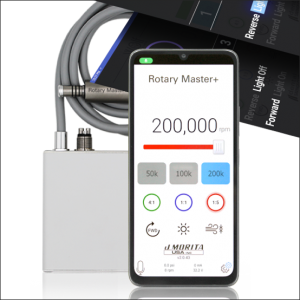
What factors influence the success of direct hooding with Biodentina?
Lara Figini
Direct pulp capping is a procedure that has been used for many years, and involves placing a special material directly on the exposed part of the dental pulp with the aim of preserving its vitality for as long as possible. The ultimate goal of this procedure is to induce the formation of reparative tertiary dentin by the pulp cells. For many decades, calcium hydroxide has been the material of choice among the various pulp capping agents available, which has been joined in recent years by aggregate mineral trioxide (MTA). However, MTA is difficult to use. due to its long hardening time, it has poor handling properties, expensive and offers unwelcome potential tooth and soft tissue pigmentation. To overcome these limitations, other bioactive cements based on tricalcium silicate have recently been introduced on the market. One of these materials is Biodentine. It is composed of a powder and a liquid, and mainly contains tricalcium silicate (3CaO · SiO2), dicalcium silicate (2CaO · SiO2) and calcium carbonate (CaCO3). Several in vitro studies have evaluated Biodentine however, few histological studies have been conducted to evaluate the pulp response to this calcium silicate cement in both animal and human teeth, and few data on the subject with an adequate sample size or long term.
Materials and Methods
In a clinical study, published in the Clinical Oral Investigation of June 2018, the authors prognostically evaluated the factors that could influence the outcome of the treatment of direct pulp hooding using Biodentine (Septodont, Saint-Maur-des-Fossés, France), in permanent teeth where pulps had been exposed during caries removal.
112 teeth, between 2010 and 2014, with deep carious lesions underwent direct pulp capping. Patients underwent follow-up visits at 2–3 months and 1–1.5 years of treatment, with a routine examination at both recall visits. Periapical radiographs were taken at 1–1.5 years. Treatments performed if there were no complaints from patients, if there were positive reactions to cold and electrical tests on the treated teeth, if there was no sensitivity to percussion and no enlargement of the periapical ligament, were considered as successful. Fisher's exact test was used for statistical analysis.
Results
Eighty-six teeth were available for 1–1.5 year follow-up. The overall success rate was 82.6%. Only the age of the patient was shown to have a significant effect on the pulp survival rate: the success rate was found to be 90.9% in patients under the age of 40 and 73.8% in patients aged 40. or more. Gender, treatment of initial or secondary caries, occlusal or cervical / proximal caries, delayed positioning of the permanent filling, tooth position and type of arch did not influence the outcome.
Conclusions
From the data of this study, which must be confirmed in other similar studies, it can be concluded that the patient's age significantly influences the success of direct dental pulp capping using biodentine.
Clinical implications
Asymptomatic vital permanent teeth with pulp exposed due to caries can be successfully treated by direct capping with Biodentine especially in patients under 40 years of age.
For additional information: Factors affecting the outcomes of direct pulp capping using Biodentine
 Related articles
Related articles
External cervical resorption is a type of dental resorption that originates from the loss of the cementum's protective layer.
By Arianna Bianchi
Endodontic therapy is one of the most used techniques in dentistry, allowing the removal of contaminated or damaged pulp tissue and replacing it with a biocompatible synthetic material to prevent...
Pediatric dentistry 04 May 2022
The evaluation of MTA and Biodentine as a pulpotomy materials for carious exposure in primary teeth
The aim of the present study was to compare the long term clinical and radiographic success rates of Biodentine and MTA pulpotomies, performed on primary teeth...
Direct pulp capping is a treatment for pulpal carious exposures that is taught regularly in dental schools but is not applied as assiduously by dentists because, according to several past studies, it...
Endodontics 20 December 2022
Direct dental pulp capping using calcium hydroxide: a 35-year follow-up
The authors evaluated the long-term outcome of the direct pulp capping technique in mature teeth with pulp exposure due to advanced caries with diagnosis of reversible pulpitis.
 Read more
Read more
Oral pathology 25 November 2025
Virtual microscopy (VM) is a technology for showing microscope slides using computers and could be considered a progression of classic methodology using optical microscopes.
For every assist this season, the insurance provider will donate $25 to TUSDM Cares for Veterans
Products 25 November 2025
J. MORITA USA, a world leader in handpiece technology, has announced the Rotary Master+ Electric Motor. Compatible with Morita TorqTech electric attachments and most competing electric handpieces on...
News 25 November 2025
Let’s be honest: nothing kills the vibe quite like bad breath. However, while 85% of people prefer for someone to tell them if their breath needs some freshening up, only 15% are willing to break...
News 25 November 2025
Vitana Pediatric & Orthodontic Partners (Vitana), a dentist-led dental partnership organization (DPO) focused exclusively on elite pediatric dental and orthodontic practices with operations in...















